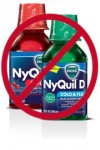That’s the title of this OpEd by Gwynne Dyer
It’s too early to say that there is a general revolt against the “war on drugs” that the United States has been waging for the past 39 years, but something significant is happening. European countries have been quietly defecting from the war for years, decriminalizing personal consumption of some or all of the banned drugs in order to minimize harm to their own people, but it’s different when countries like Argentina and Mexico do it.
Latin American countries are much more in the firing line. The United States can hurt them a lot if it is angered by their actions, and it has a long history of doing just that. But from Argentina to Mexico, they are fed up to the back teeth with the violent and dogmatic U.S. policy on drugs, and they are starting to do something about it.
It’s a good point. The U.S. is the lead player in the destructive war on drugs, and for many years it has held this international war together by sheer will, iron fisted control of information/propaganda, and the combined carrot/stick of foreign aid and military power. But that grip is weakening, not just because other countries are realizing that U.S. drug policy hurts them (perhaps more than any potential loss of aid), but also because of the work we have done internally to educate people and the press.
The progress we’ve made within the U.S. makes it harder for our government to punish other countries for common sense reforms.
- Mexico decriminalized small amounts of marijuana, cocaine, heroin, meth, LSD.
- Argentina Supreme Court ruled possession of small amounts of marijuana not illegal.
- Brazil decriminalized drug possession in 2006
- Bolivia successfully commenced the formal process to remove chewing coca leaves prohibition from the Single Treaty this year. The U.S. has not yet objected.
- As recently as 2005, the U.S. was able to pressure the UNODC into backing off on needle exchange support. Now the UNODC has fully embraced the notion, and harm reduction is talked about openly.
Significant cracks, both within and without. And each crack emboldens more countries. Each positive drug policy change helps them realize that reform is better than prohibition.
As depressing as many drug war stories are each day, it’s important to look around now and then and realize that the entire foundation of the drug war is being eaten away bit by bit.
Update: Colombia
Colombia’s Supreme Court ruled that possession of illegal drugs for personal use is not a criminal offense, citing a 1994 decision by the country’s Constitutional Court, Caracol Radio said Wednesday.

 It’s bad enough now that you have to go put your name on a register in the drug store during open hours in order to get any decent cold medicine (no more getting Nyquil D in the middle of the night so you can rest — you have to plan ahead to get sick). Now they want you to have to go to the doctor and get a prescription to buy it. Stupid.
It’s bad enough now that you have to go put your name on a register in the drug store during open hours in order to get any decent cold medicine (no more getting Nyquil D in the middle of the night so you can rest — you have to plan ahead to get sick). Now they want you to have to go to the doctor and get a prescription to buy it. Stupid.